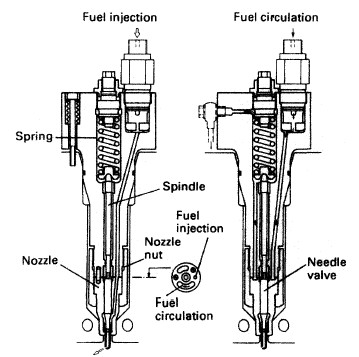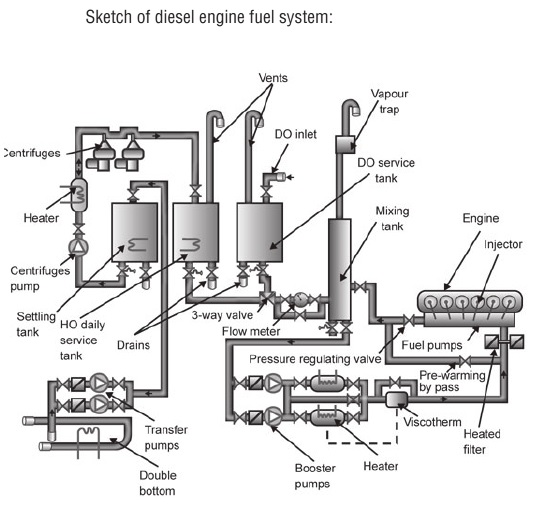
Fuel Injectors for Marine Diesel Engine
The function of the fuel injection system is to provide the right amount
of fuel at the right moment and in a suitable condition for the
combustion process. There must therefore be some form of measured
fuel supply, a means of timing the delivery and the atomisation of the
fuel.
The injection of the fuel is achieved by the location of cams on a camshaft. This camshaft rotates at engine speed for a two-stroke engine and at half engine speed for a four-stroke. There are two basic systems in use, each of which employs a combination of mechanical and hydraulic operations. The most common system is the jerk pump; the other is the common rail.
The injection of the fuel is achieved by the location of cams on a camshaft. This camshaft rotates at engine speed for a two-stroke engine and at half engine speed for a four-stroke. There are two basic systems in use, each of which employs a combination of mechanical and hydraulic operations. The most common system is the jerk pump; the other is the common rail.



